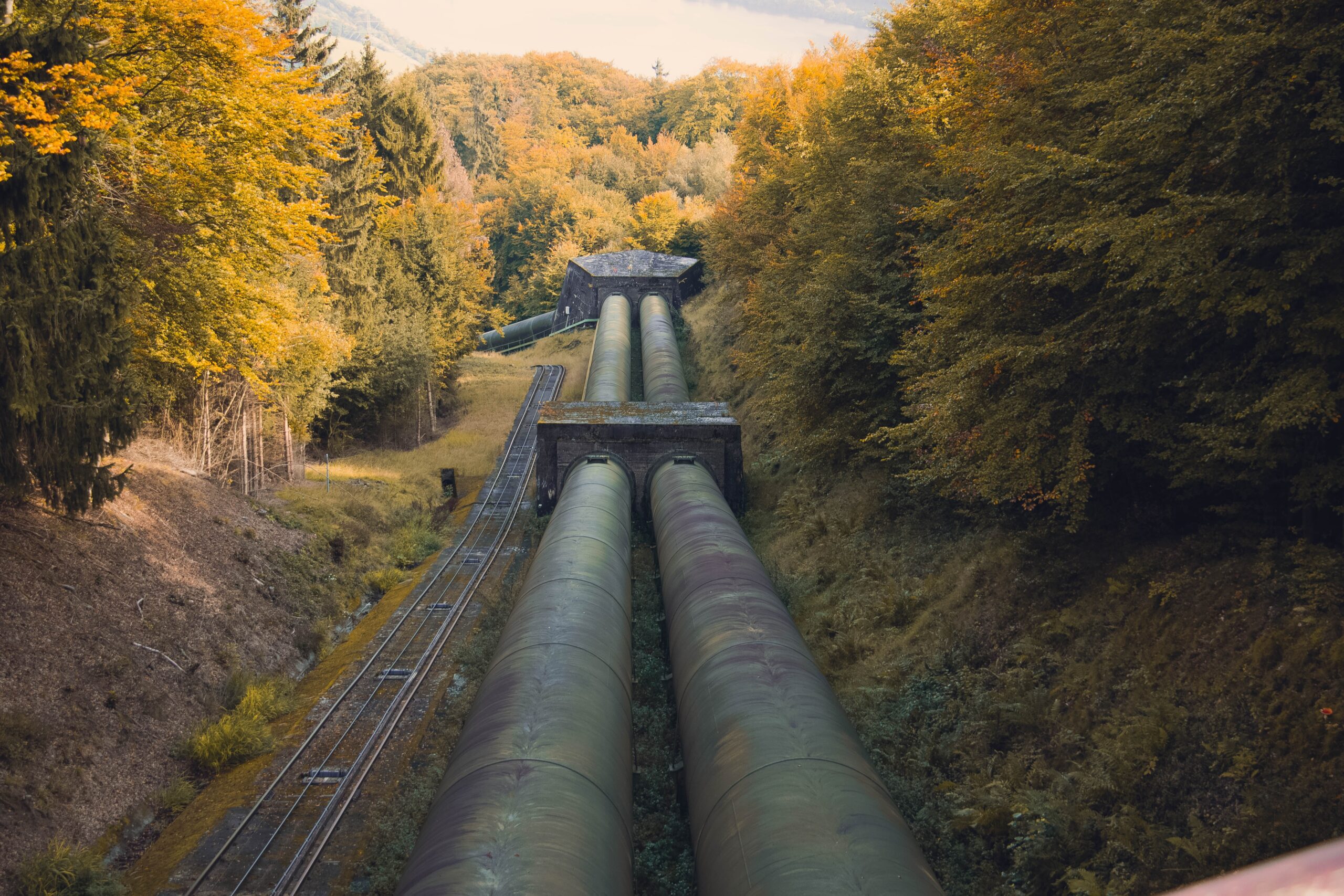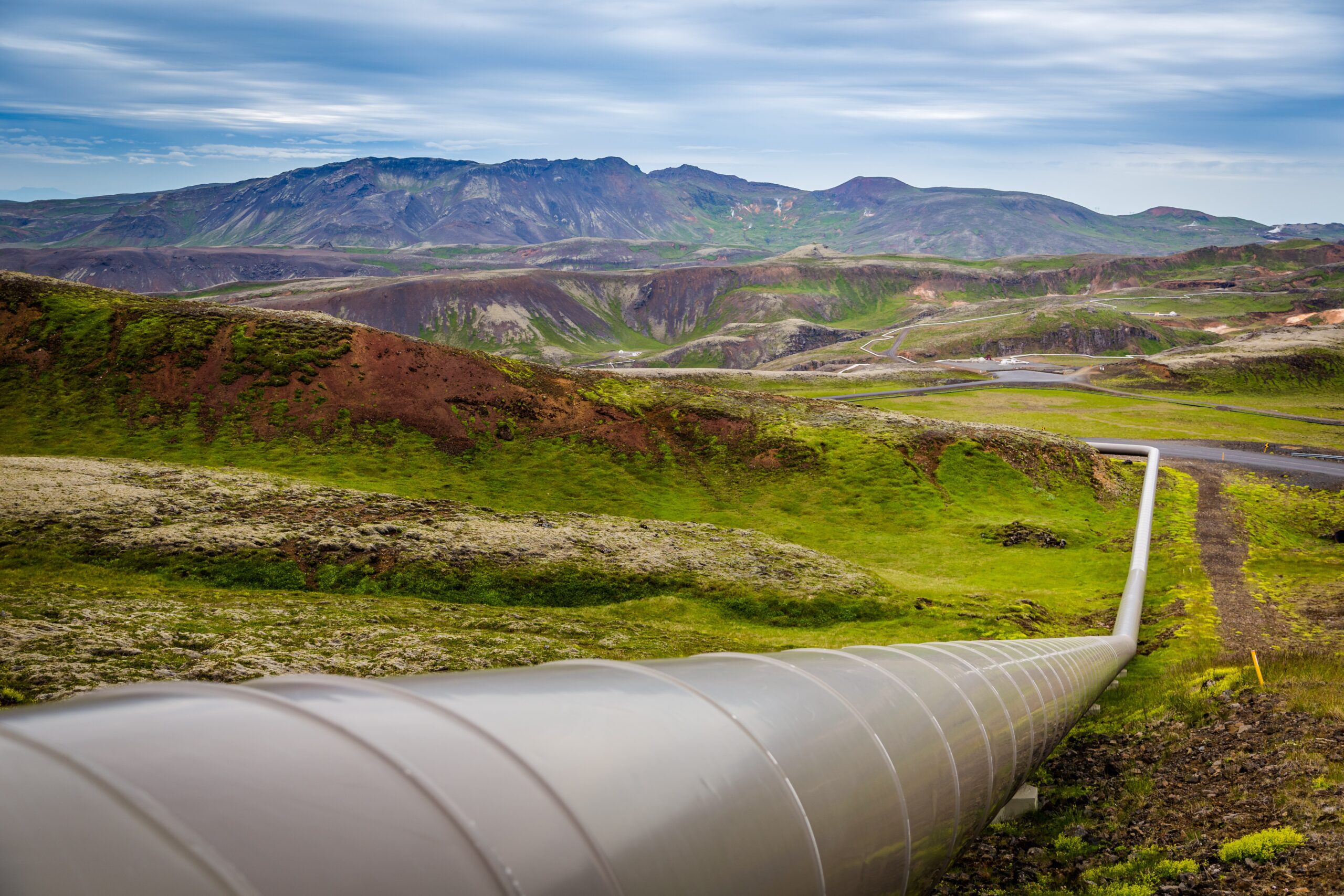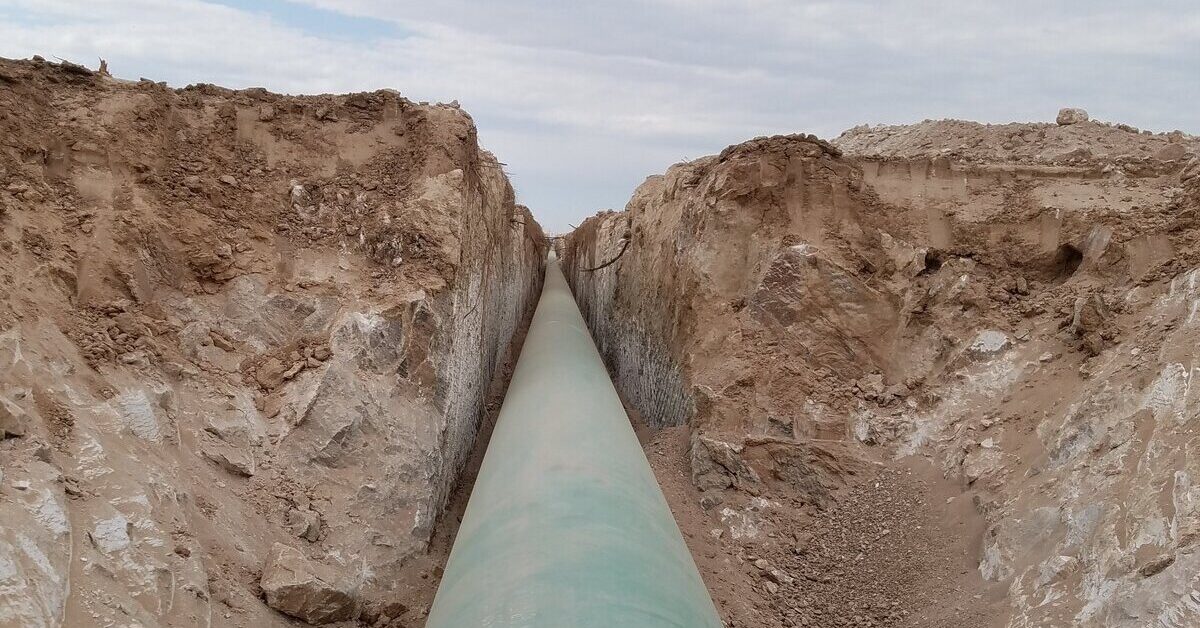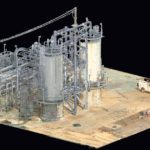Natural gas currently accounts for about one-quarter of global electricity generation. It’s clearly a burgeoning source of fuel that will be powering our world for years to come. But many people don’t know the first thing about natural gas, where it comes from, and how it gets to you.
In this article, we will be covering the ins and outs of natural gas pipelines, which are used to gather, transmit, and distribute natural gas from the initial well all the way to your individual home. Surveyors, environmental scientists, and engineers play an important role in constructing the intricate network of natural gas pipelines that undergirds our society.
What Is a Gas Pipeline?
A gas pipeline is a network of pipes that are used to transport gas across a vast distribution network. In the context of energy and civil engineering, pipelines are used to distribute various fluids, such as oil, oil products, or natural gas. These oil and gas pipelines form extensive
distribution networks.

via Unsplash
For instance, the U.S. natural gas pipeline network is a highly integrated conglomeration that is designed to transport natural gas throughout the continental U.S. This massive pipeline network involves about 3 million miles of pipelines that link natural gas production areas and natural gas storage facilities with consumers.
Canada also has an impressive spread of natural gas pipelines – about 825,000 kilometers (512,631 miles) in all. While these pipelines are typically located underground, that’s not always the case. In Alaska, for example, there is plenty of pipeline above ground.
In the energy sector, there are two major types of pipelines: liquids pipelines and natural gas pipelines. Liquid pipelines are used to transport either crude oil or natural gas in liquid form. These substances then go to refineries where they’re subject to distillation and production processes. Some liquid pipelines may also be used to transport distilled petroleum products (like gasoline) to distribution centers.
Largely, however, natural gas pipelines are the ones used for distribution. These pipelines transport natural gas to processing plants and are used for distribution purposes – natural gas is often delivered directly to homes through such pipelines.
Within these two categories, there are also four subcategories that describe pipelines of different sizes and purposes: gathering lines, feeder lines, transmission pipelines, and distribution pipelines. The combination of these four types of lines makes up the complex network of natural gas pipelines that we see in countries throughout the world.
What Materials Are Gas Pipelines Made Of?
Pipelines made for gathering and transmission are usually made of steel, but a select few are made from plastic, iron, composite, or other materials. Most gas pipelines are made of steel, but the type of pipe material used in a pipeline normally depends on the expected service requirements and predicted operational parameters for the pipeline.
Gas distribution pipelines, which serve a different function than their gathering and transmission counterparts, represent the highest amount of pipeline mileage in the United States. These pipelines might be constructed out of plastic or steel – although some can be made from iron, copper, or other metals.
The steel pipe used in the construction of these pipelines can range in size, reaching from several inches in diameter to several feet. In terms of length, they can be anywhere from hundreds of feet to hundreds of miles long.
Typically, the steel pipe necessary for constructing gas pipelines is manufactured according to strict design specifications. It is often produced in 40-foot sections that are joined together in the field with welding tools when the pipeline is being constructed.
Another important distinction when it comes to pipeline materials is uncoated versus coated pipelines. Some gas and hazardous liquid pipelines are uncoated and are known as “bare steel pipelines.” Most of this type of pipeline has been taken out of service and is no longer used in constructing new pipelines today, but there are a few that continue to operate.

via Unsplash
What Happens if a Natural Gas Pipeline Breaks?
If a natural gas pipeline breaks, there are a number of associated risks, including fires, explosions, asphyxiation, and damage to both the natural and built environments.
So, what causes natural gas pipelines to break? There are many reasons that might contribute to an incident of pipeline breakage, but these are some of the most common:
- Water main breaks that weaken surrounding roadways and/or pavement, damaging underlying gas pipelines
- Overpressure or under-pressure in the gas system
- Extreme natural events such as floods, tornadoes, or wildfires
- Equipment failures
- Heavy ice or snow on outside meters, vents, or gas pipelines
Avoiding these incidents when possible is an important step to keep natural gas pipelines from being disturbed. While most natural gas pipelines are buried under the ground, there are some that do their work above ground, and these are particularly susceptible to influence and damage from exterior factors.
Although natural gas pipelines are a necessary part of the use and transportation of assorted petroleum products that fuel our society and economy, there are certainly environmental concerns associated with the construction and operation of pipelines. That’s where environmental engineers come in. They can help mitigate these risks and aid in preserving our environment.
These environmental concerns vary depending on how and where each pipeline is being built, but common issues may include:
- Reduction of air quality that results from dust produced during the construction projects as well as emissions related to fossil fuel combustion necessary to power the construction equipment.
- Increased noise pollution from both construction and pumping stations.
- Loss of plant life associated with construction, surface and soil disturbances, and the potential for changes in water flows.
- Soil erosion and contamination that are prompted by both construction and potential leakage.
- Water resource disturbances (both quantity and quality) that are connected to erosion, herbicides, and any potential leaks.
Pipelines have been constructed for many years, so there have been plenty of environmental measures that have taken place in order to mitigate risk. But of course, environmental impacts cannot be entirely avoided – just reduced.
Of all the possible environmental issues associated with pipelines, the scariest one (in the minds of most people) is a pipeline rupture or spill. Petroleum products, if spilled, have been known to cause significant environmental damage. Plus, they can pose a risk to human health. That’s because they can burn, contain toxic chemicals, and pollute groundwater.
Fortunately, pipeline ruptures – and the resulting spills – are relatively uncommon. Older pipelines are much more vulnerable to spilling as a result of corrosion, or the metal disintegrating due to rust. When these explosions or leaks do happen, however, the results can be extremely harmful and dangerous to both people and the environment.
Clearly, when working with natural gas pipelines, the stakes are high. Engineers who are highly trained and qualified are the only ones who should be taking on this type of work.
How Does Gas Flow Through a Pipeline?
Gas flows through a pipeline due to the results of a series of compressors creating pressure differentials. In other words, natural gas flows from an area of high pressure to an area of lower pressure, following the natural laws of physics. The compressors are powered by electric or natural gas-fired engines that compress the incoming gas and then push it out at an increased rate of pressure.
There are a few gathering systems out there that actually don’t need compressors. Why? In some cases, the natural gas coming out of the wells has enough pressure to move through the gathering lines on its own. As you might expect, the compressors needed for large transmission lines are significantly larger than those compressors used to move gas through smaller distribution lines – such as the ones that go directly to houses and residential locales.
In transmission pipelines, natural gas is typically compressed to pressures between 500 and 1,400 pounds per square inch (PSI). The compressor stations on these pipelines are normally built every 50 to 100 miles along the length of the pipeline. This is just about the required distance to ensure the pressure can keep the gas moving.
Some transmission pipelines are built to be what’s called bidirectional. This means that gas can come from both ends of the pipeline, depending on where the gas is gathered from. In other words, the compressors can be used to create varying pressure differentials, meaning gas can flow in either direction in the pipeline.
One example of such a bidirectional pipeline is the Williams Northwest Pipeline, which started as a 1,500-mile pipeline and has now grown into a 4,000-mile pipeline. It’s a transmission system that crosses Washington, Oregon, Wyoming, Utah, Idaho, and Colorado. The pipeline provides access to gas supplies in British Columbia, Alberta, the Rocky Mountains, and the San Juan Basin.
Bidirectional pipelines like the Williams Northwest Pipeline offer more flexibility in terms of both pricing and supply for the company’s customers. The advancements in the fields of civil engineering and technology have allowed for such innovations as bidirectional pipelines. No matter which way the gas is flowing, high-powered compressors and pressure differentials allow for it to move throughout the pipeline.

via Unsplash
Are Gas Pipelines Always Underground?
Most gas pipelines in the United States are built underground, although there are some that are doing their work above the surface. Because most of America’s pipelines are underground, most people aren’t aware of just how large and complex the United States’ network of pipelines actually is.
Of all the countries in the world, the U.S. has the most miles of natural gas pipelines. Russia comes in at a not-so-close second place, and Canada follows close behind Russia in third. But because the U.S. has buried so much of its pipeline mileage, the vast scope of the pipeline system is invisible to the average citizen.
Deciding whether or not a pipeline should be built above or below ground really depends on the soil conditions encountered along the path (or the right-of-way, as it is officially called). Where there is thaw-unstable permafrost, pipeline designers can avoid potential issues with melting by placing the pipeline above ground.
Pipelines built above ground are typically supported using an elevated system known as vertical support members. An excellent example of this is the Trans-Alaska Pipeline System, or TAPS, which was completed in 1977. More than 50% of that pipeline runs above ground so that the hot oil doesn’t melt the area’s permafrost.
What Is the Difference Between Oil and Gas Pipelines?
Oil pipelines transfer liquid petroleum in its crude format, while gas pipelines transfer natural gas and biofuels. Although they might seem similar, oil and gas pipelines have many important differences, ranging from capacity, speed, temperature, impact, and power source.
These different types of pipelines operate at very different speeds. Oil pipelines generally move faster than their gas counterparts. Their storage capabilities are also different. While the pipe’s area itself is fixed, natural gas is far more compressible than crude petroleum, so gas pipelines can carry more fuel at once.
Gas pipelines can also be kept at lower temperatures than oil pipelines. Oil pipelines require additional heat to ensure they don’t get clogged. Going along with this point, crude oil pipelines have a far more drastic impact on the environment. If sudden leakage occurs, crude petroleum pipelines can have dramatic consequences and the leak can catch fire quite easily.
Finally, the two pipelines have different sources of power. Oil pipelines are typically powered by a centrifugal pump whereas gas pipelines are powered by a compressor and the pressure differentials that it creates.
Final Thoughts
No matter what kind of project you’re taking on, it’s crucial to understand the intricacies of America’s pipeline system. Both natural gas and oil pipelines have various pros and cons, and ensuring you have a solid grasp on how each type works is essential.
It’s especially important to consider environmental impact when taking on these types of projects. Our country (and the world) relies on natural gas to fuel our society and our economy, but that would not be possible without the important work taken on by engineers to ensure we preserve the natural world in the process.
Pipeline management, planning, and maintenance are all crucial parts of building a sustainable energy infrastructure that can power our world for years to come.





